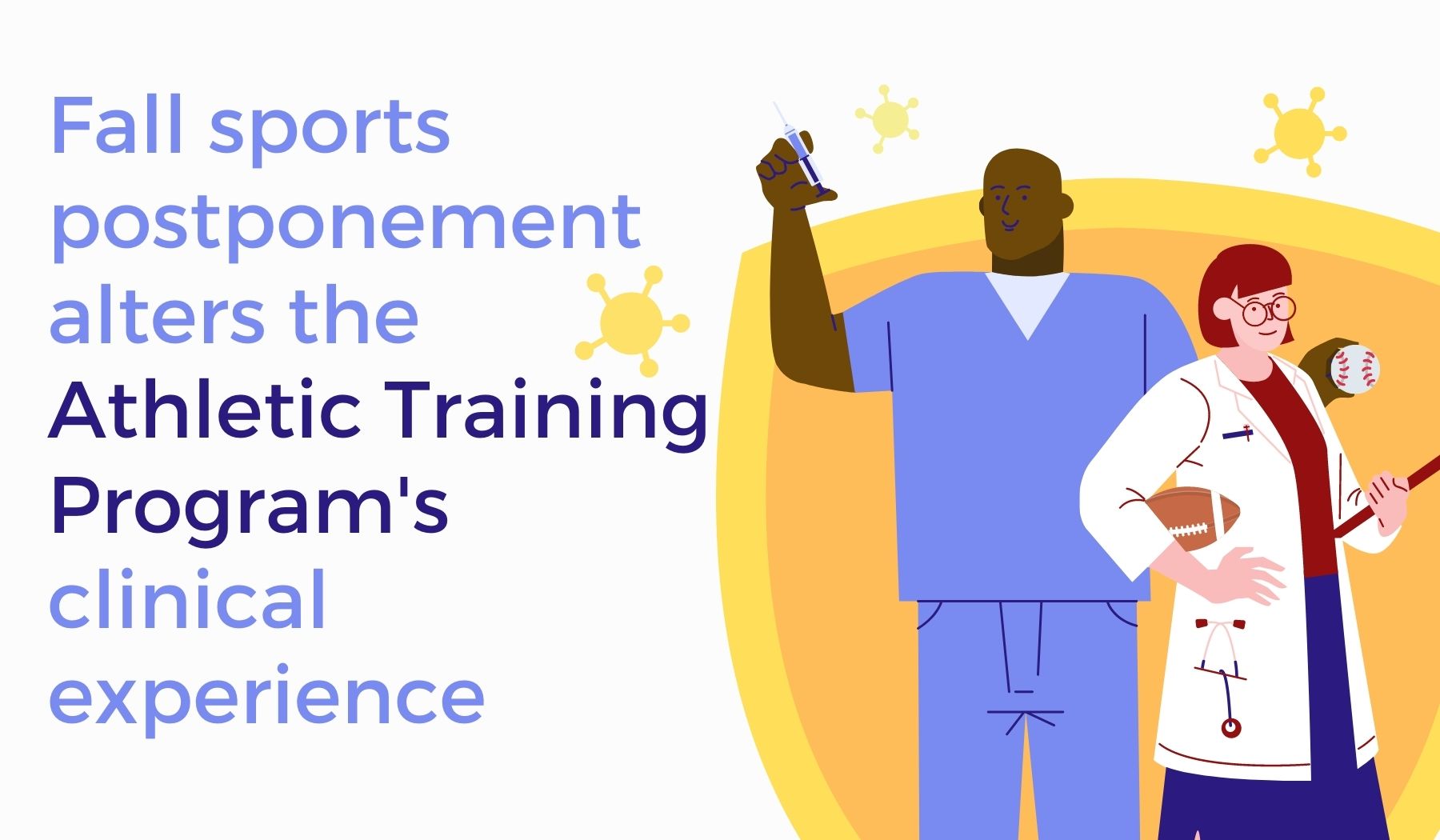
TU’s ATP program sees changes to clinicals due to sports postponement
By: Grace Coughlan, Associate Editor
With fall sports being postponed until the spring, TU’s Athletic Training students have seen big adjustments within their learning and clinical experiences.
The Athletic Training Program (ATP) at Towson prepares students for their role after college as an athletic trainer.
“To put it in simpler terms, an athletic trainer is a first responder and a physical therapist all in one,” said junior ATP student, Bria Butler. “Athletic training encompasses role delineation which includes, injury and illness prevention, clinical evaluation and diagnosis, immediate and emergency care, treatment and rehab, and lastly professional health and wellbeing.”
Students looking to apply to the Athletic Training Program start off as pre-athletic training majors. As pre-athletic training majors, students are considered observational students. They are allowed to watch but not participate in any of the clinical experiences.
“In order to apply you have to complete the prerequisites, one which includes completing observation hours,” said senior ATP student, Maura Gaffney. “These hours are not exactly clinical work, they are more just for observing and interacting with the Athletic Trainers, athletes and students who are already in the program.”
Once accepted into the program, students start their clinical rotations immediately.
Athletic training students have the opportunity to work their clinicals with many different institutions, including Towson University’s athletic department, sports medicine clinics, and high schools and universities located near Towson.
“Clinical experiences are very different for everyone due to the nature of the sport and preceptor they are placed with,” Gaffney said. “Typically, and depending on what year you are, you will be and under the supervisor of a certified athletic trainer completing evaluations, assisting with rehabs, taping, basic wound care, assisting your preceptor with documentation.”
All athletic training students are given the opportunity to work with TU’s athletic department as part of their clinical rotation. ATP also requires students to have at least one off-campus rotation.
“Typically as an underclassman our clinical coordinator does a really nice job placing students with preceptors/teams,” Gaffney said. “Once you are a senior, you have the opportunity to request where you would like your clinical placement to be.”
New tasks for ATP students included helping patients prepare for rehab while quarantining at the start of the pandemic.
“When the virus first caused us to go home, I was working with Towson Softball,” Butler said. While all games and practices had come to a halt, rehab still needed to be completed. We had to print out everyone’s rehab regimen and supply them with sufficient equipment and materials so they could still do rehab at home. My preceptor continued daily check-ins with them via zoom and I got the opportunity to join the call at times to continue my education.”
ATP adjusted their requirements for students for the fall semester. Clinical rotations are now optional and students aren’t required to complete the previously required 200 hours of clinical training.
“We are only allowed the complete hours with TU athletics so seniors did not get to go to their requested clinical placement,” Gaffney said. “We are allowed to sign up for 3 hours at a time with only one other person.”
Students participating in the optional clinicals are still able to work with Towson athletes this semester while following certain protocols.
“Right now it’s pretty much similar but not the same as far as you are not being assigned to a team when you go to the clinic you have to make sure you’re wearing a mask, goggles, gloves, you have the proper PPE which is very different than before,” said ATP senior student, Kiara Smith. “Everything is appointment-based now so when we go in it’s not quick, fast paced, it’s very slow. You have time to focus on one task at a time.”
While the clinical opportunities are still available, Smith explained how the experience is very different now.
“My time in the clinic is different than my time covering a game,” Smith said. “You’re definitely on more high alert during a game. It’s very helpful if you see how the injury happened because as you’re running up you’re already clicking in your head about things you can check for. So while we’re still getting the evaluations, understanding rehab, understanding how to diagnose injuries we’re still missing the big component of what happens when there is an emergency during a game.”
Virtual learning has presented challenges for ATP students in terms of hands-on experience.
“Normally we learn a skill or test in class, practice, and then learn another, practice and so on,” Gaffney said. “It’s hard to practice any of these things when you are home with or without a roommate or if you don’t have the proper equipment to practice so you have to rely on the book and videos from class. Now since we have to stay distant it’s a little harder to do that.”
Smith sees these challenges as obstacles that ATP students are learning to overcome.
“Overall it’s taught us how to be adaptable, it taught us how to be creative,” Smith said. “It forced us to think out of the box a little bit as far as what an athletic trainer can do. How can I still use my skills to be helpful to my community during this time. I know some athletic trainers that work with Towson Sports Medicine were making masks for the community. Some of our students were working at different sports camps doing temp checks as a volunteer experience, showing the world that we can utilize our skills out of the sports world.”
-Sophia Naughton, contributing writer, contributed to this article.

